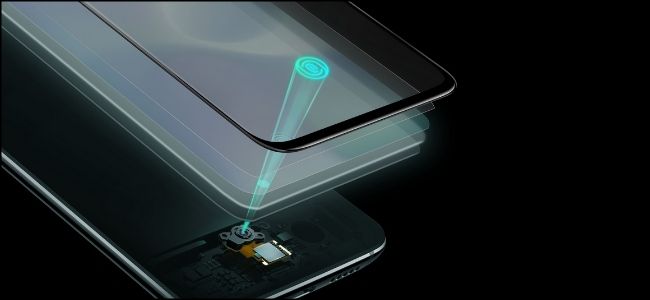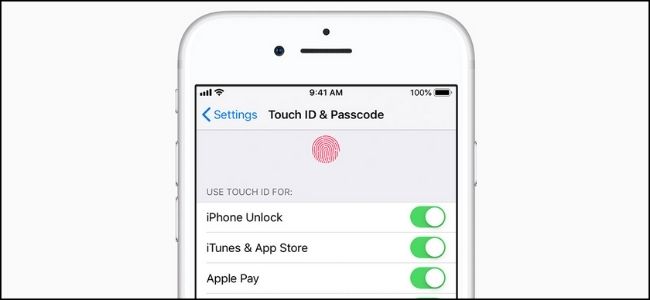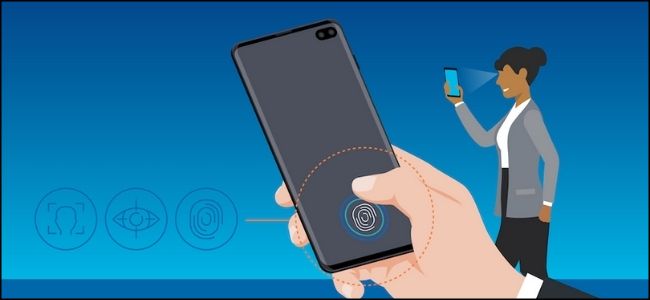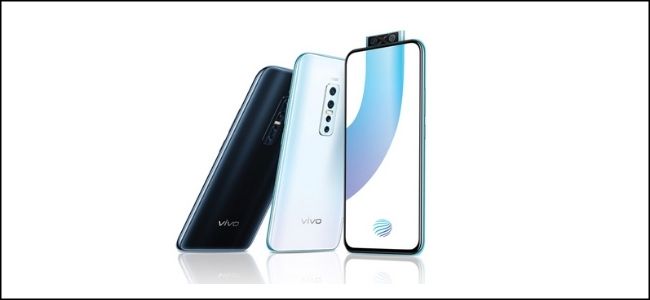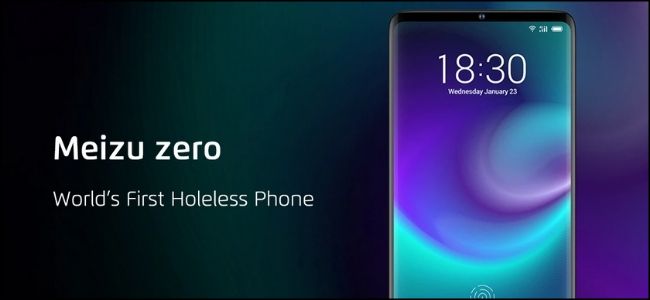Quick Links
In-display fingerprint scanning is like magic! You touch the screen, it reads your fingerprint, and then it instantly unlocks your phone. Let's look at the technology behind the magic.
Moving Away from Physical Scanners
Fingerprint scanning, like other forms of biometric recognition, is nothing new to computing devices. While scanners have been on laptops for several decades now, the first mobile phone to have one was the Pantech GI100 in 2004. They came back in a big way during the smartphone era, though, due to the ever-growing need to protect the data in our pockets.
In 2013, the Apple iPhone 5S became the first major mobile device in the U.S. market to have a fingerprint scanner with the launch of Touch ID. Although Apple has since phased replaced this feature with facial recognition, fingerprint scanners became standard on all smartphones. Most placed the biometrics on the back or side of the device.
Over the last few years, other phone manufacturers have also phased out physical fingerprint scanners. Like Apple, some have removed fingerprint verification entirely, but others have replaced the physical pad with a scanner in the screen. This allows you to unlock your phone by placing your finger on a specific area of the phone's display.
The In-Display Scanning Process
Generally, the scanning process is the same, whether it's a physical or in-display design.
Usually, a specific part of the screen has a scanning area under it. When you place your finger over the scanner, it takes a snapshot of your finger's pattern with a camera or other sensor. It then matches it to the biometric data on your phone. If it's a match, your phone will instantly unlock.
One of the biggest problems in-display scanners is the scanning area is relatively small. It's often a small box in the lower quarter of the display. Phone manufacturers often include a guide in the software to show you where to place your finger. This will appear when the screen is turned on or if your device supports always-on displays.
The scanning process can be instantaneous or very slow. This is likely due to the large differences between the two scanning technologies.
Optical vs. Ultrasonic
There are two primary types of in-display fingerprint scanners: optical and ultrasonic.
Optical scanners shine a bright light on your finger (it often appears on-screen as an animation). It then takes a picture of your illuminated fingerprint with a camera under the screen and makes sure it's registered. If it is, the phone unlocks.
Many think the optical scanner is the less secure of the two technologies because it uses a simple camera to capture a fingerprint image. However, it's often significantly faster. Depending on software optimization, it can be just as fast as even the best physical fingerprint scanner. You'll find optical scanners on OnePlus phones and many midrange devices.
Ultrasonic scanners are typically regarded as the better of the two technologies. Instead of light, they use ultrasonic sound waves that bounce off your finger to capture an accurate 3D image. This technique is similar to that used in medical ultrasound machines.
Ultrasonic scanners are significantly more secure than opticals because it's much tougher to fake a 3D image of a fingerprint. They're also more stable than optical scanners and work in more challenging conditions, such as when your hands are wet or dirty. You'll can find these mini ultrasounds in high-end devices, like Samsung's Galaxy series.
The Future of Seamless Tech
In-display fingerprint scanners are part of a larger plan by smartphone manufacturers to minimize visible intrusions. These include buttons, cameras, sensors, speakers, ports, and unused bezel space.
Along with the rise of in-display scanners, companies have also begun adding pop-up, front-facing cameras to improve the display-to-body ratio. This coincides with the removal of headphone jacks, and companies competing to create true wireless earbuds for their phones.
In the future, more features might be migrated under the screen. Under-display speakers allow you to listen to calls and stereo audio without any visible speaker grills. There's also an under-display camera that allows you to take portrait photos without a notch, cutout, or mechanical pop-up.
Phones with these features already exist. In 2019, Meizu previewed a device that had tiny bezels, no visible sensors, no charging port, and no buttons. Rather, it relied on an under-display speaker for calls and haptic feedback to re-create the sensation of physical buttons. It also exclusively used wireless charging. Later that year, Oppo introduced a phone with an under-display selfie camera.
We might see these seamless product designs enter more mainstream devices. Samsung has announced plans to integrate under-display camera technology in future devices. There are also rumors that Apple might remove the iPhone's charging port and go all-in on wireless charging. The MagSafe technology will definitely help with that.

